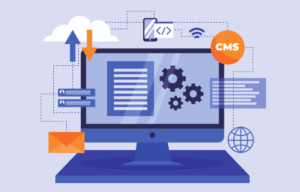Django Admin is a powerful feature that provides an automatic admin interface for managing data in your Django models. It offers a user-friendly and customizable interface for performing CRUD (Create, Read, Update, Delete) operations. Here are some tips and best practices for working with Django Admin:
- Registering Models:
- To enable Django Admin for a model, register it in the app’s
admin.pyfile. - Use the
admin.site.register()method, passing the model class as the argument.
- Customizing the Admin Interface:
- Django Admin allows you to customize the appearance and behavior of the admin interface.
- Override the
ModelAdminclass for the specific model inadmin.pyand register it withadmin.site.register(). - Customize the display of fields using the
list_displayattribute to specify the fields to show in the list view. - Use the
list_filterattribute to enable filtering by specific fields. - Customize the detail view by defining
fieldsetsto group fields and improve the layout. - You can also define custom methods in
ModelAdminto add functionality or display calculated fields.
- Inline Model Admin:
- If a model has a related model, you can display it inline within the parent model’s admin page using
TabularInlineorStackedInline. - Inline models are defined within the parent model’s
ModelAdminclass using theinlinesattribute.
- Permissions and User Groups:
- Django Admin integrates with Django’s built-in authentication and authorization system.
- By default, staff users have full access to the admin interface.
- Use Django’s permission system to restrict access to specific models or actions.
- Create user groups and assign permissions to them for easier management of access rights.
- Overriding Admin Templates:
- Django Admin provides a default set of templates for rendering the admin interface.
- You can override these templates to customize the look and feel of the admin interface.
- Create a directory named
templateswithin your app and copy the desired admin template from the Django source code. - Modify the template as needed and place it in the
templates/admindirectory.
- Adding Custom Views:
- Django Admin allows you to add custom views to perform specific actions.
- Define a new method in the
ModelAdminclass and decorate it with the@admin.site.admin_viewdecorator. - Use the
@admin.site.registerdecorator to register the model with the custom view.
- Third-Party Admin Packages:
- Django Admin can be extended using third-party packages that provide additional functionality and features.
- Packages like
django-import-export,django-suit, anddjango-jetoffer advanced admin customization options.
Remember to keep the Django Admin interface secure by properly configuring authentication and authorization. Limit access to trusted users and apply appropriate permissions to prevent unauthorized access or modifications.
For more detailed information and advanced customization options, refer to the Django documentation on the admin site: https://docs.djangoproject.com/en/3.2/ref/contrib/admin/.




